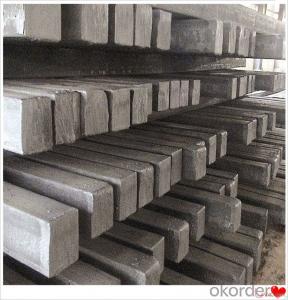Continuous Casting Steel Billet 3SP 5SP 20MnSi Multifunctional
- Loading Port:
- Dalian
- Payment Terms:
- TT OR LC
- Min Order Qty:
- 100 m.t.
- Supply Capability:
- 50000 m.t./month
OKorder Service Pledge
OKorder Financial Service
You Might Also Like
Continuous Casting Steel Billet 3SP 5SP 20MnSi Multifunctional
Description
Reference Price:$260/ton Mn 0.3%-0.6%
Rectangular billet continuous casting billet and mainly general carbon steel, low carbon low silicon cold-rolled material, high quality carbon structural steel, high strength low alloy steel, special steel, etc.
The billet is mainly divided into two kinds from the shape:
Slab: cross section width and height of the ratio of the larger, mainly used for rolling plate.
Billet: equal cross section width and height, or a huge difference, mainly used for rolling steel, wire rod. ,
Steel billets have distinct characteristics as compared with already furnished steel bars and products. Billets have a specific grain structure, which enables the metal to be processed more intricately. Steel billets are also known for their malleability and ductility, especially when exposed to varying temperatures during shaping and molding.
Processing of Steel Billet
Steel billets are considered fresh and raw, and they must undergo a series of manufacturing processes before they can be used for various purposes. Billets are made by means of freezing molten liquid, and are later exposed to extremely low temperatures in order to allow the metal to take shape and solidify in chemical structure. The temperature manipulates the metal's physical properties, and tones its strength and durability. The subsequent processes provide the metal's curved mold design so that it can fit the allotted space provided by other machines, which complete the finishing procedures.
Images
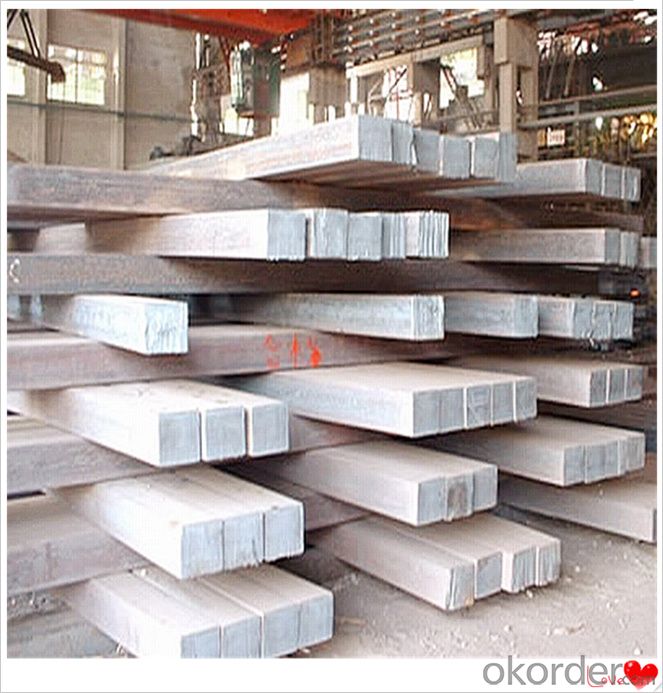
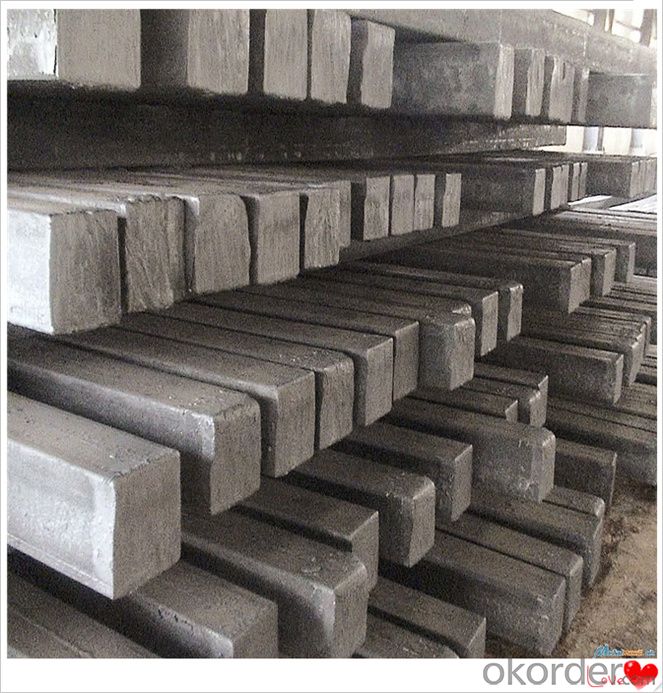
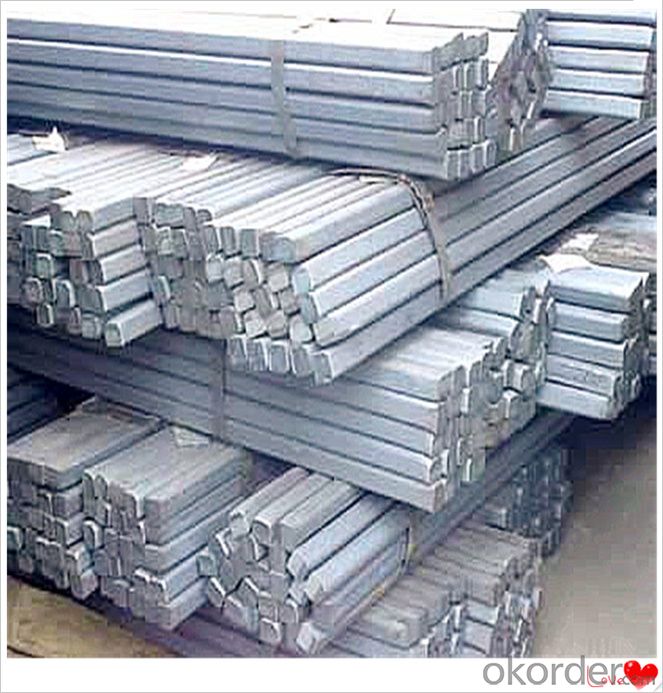
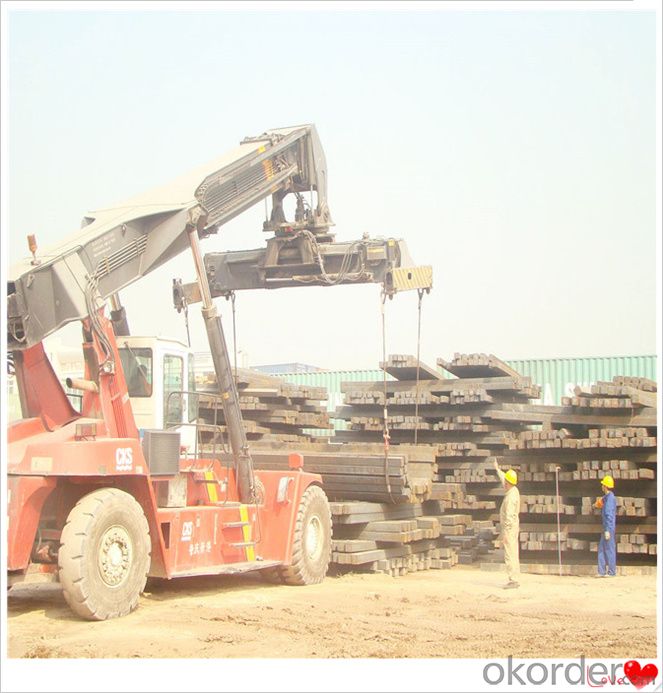
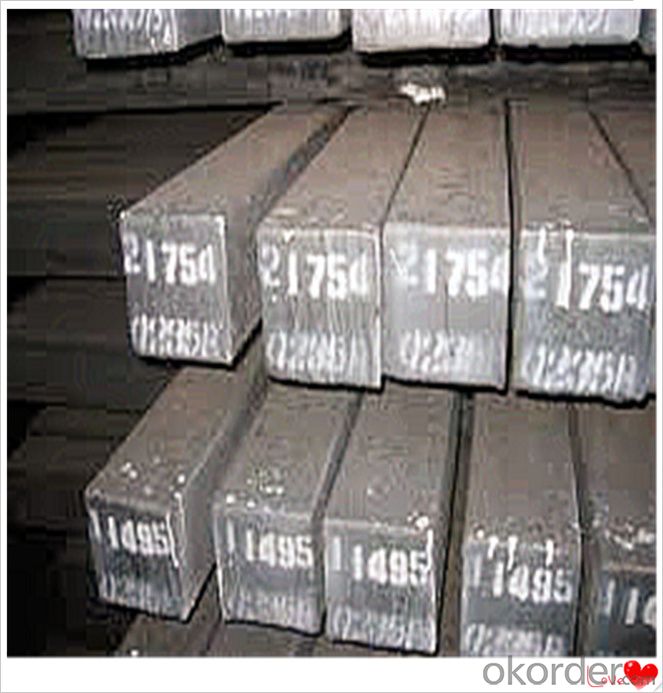
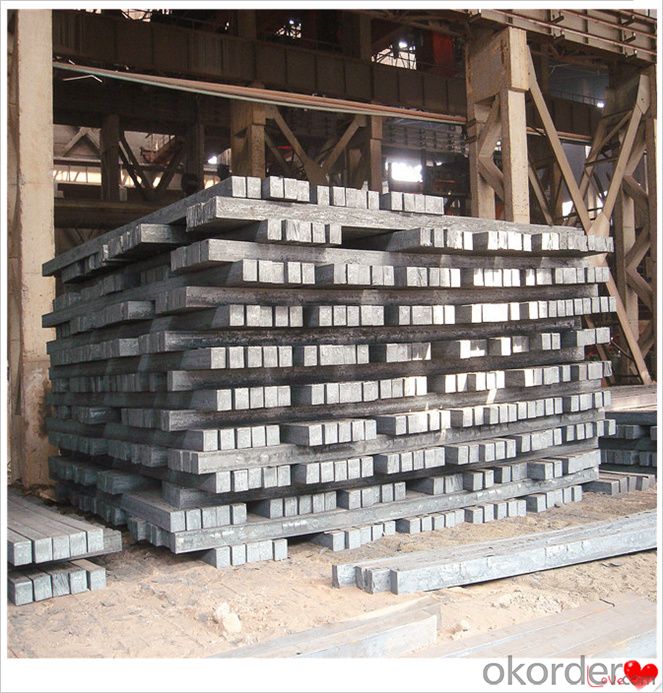
Technical Data
Size:100*100,120*120,150*150,130*130
Mn: 0.3%-0.6%
C: 1%
Cr:0.1%
Packaging
cargo ship or container
usually container price will add 15USD per ton
RFQ
We have organized several common questions for our clients,may help you sincerely:
1) How about your company?
A world class manufacturer & supplier of castings forging in carbon steel and alloy steel,is one of the large-scale professional investment casting production bases in China,consisting of both casting foundry forging and machining factory. Annually more than 8000 tons Precision casting and forging parts are exported to markets in Europe,America and Japan. OEM casting and forging service available according to customer’s requirements.
2) How to guarantee the quality of the products?
We have established the international advanced quality management system,every link from raw material to final product we have strict quality test;We resolutely put an end to unqualified products flowing into the market. At the same time, we will provide necessary follow-up service assurance.
3) How long can we receive the product after purchase?
In the purchase of product within three working days, We will arrange the factory delivery as soon as possible. The pecific time of receiving is related to the state and position of customers.Commonly 7 to 10 working days can be served.
4)Do you have your own QC department?
Yes, we have, our QC department will inspect the goods during the process of mass production and after completion of production.
hot sale!!! steel billets/ mild steel bar/ billet steel
(1): High quality steel with reasonable price.
(2): Wide excellent experiences with after-sale service.
(3): Every process will be checked by responsible QC which insures every product's quality.
(4): Professional packing teams which keep every packing safely.
(5): Trial order can be done in one week.
(6): Samples can be provided as your requirements.
If you are interested in our products, please don't hesitate to contact me.
Your any inquiry will be appreciated and we will offer you a rock-bottom price.
- Q:What are the different methods of steel billet surface cleaning?
- There are several methods of steel billet surface cleaning, each with its own advantages and disadvantages. Some of the common methods include: 1. Shot Blasting: This method involves shooting small metallic or non-metallic particles at high velocity onto the surface of the billet. The impact of these particles removes any rust, scale, or surface contaminants. Shot blasting is an effective method for cleaning large surfaces quickly, but it can cause surface roughness and may not be suitable for all types of steel. 2. Acid Pickling: Acid pickling involves immersing the steel billet in an acid solution, typically hydrochloric or sulfuric acid, to remove scale and rust. The acid reacts with the surface contaminants, dissolving them and leaving a clean surface. Acid pickling is effective in removing stubborn scale and rust, but it requires careful handling of the corrosive acids and proper disposal of the waste. 3. Mechanical Cleaning: Mechanical cleaning methods involve using abrasive tools or brushes to physically scrub the surface of the billet. This can be done manually or using machinery. Mechanical cleaning is effective in removing loose contaminants and scale, but it may not be suitable for heavily rusted or stubbornly adhered contaminants. 4. High-Pressure Water Jetting: This method uses high-pressure water jets to clean the surface of the billet. The force of the water removes scale, rust, and other contaminants. High-pressure water jetting is environmentally friendly as it does not involve the use of chemicals, but it may not be as effective in removing heavy scale or rust. 5. Ultrasonic Cleaning: Ultrasonic cleaning involves immersing the steel billet in a tank filled with a cleaning solution and subjecting it to high-frequency ultrasonic vibrations. The vibrations create tiny bubbles in the cleaning solution, which implode on the surface of the billet, effectively removing contaminants. Ultrasonic cleaning is effective in removing even microscopic particles and can reach complex geometries, but it may not be suitable for large-scale cleaning operations. Each of these methods has its own strengths and limitations, and the choice of method depends on factors such as the type and condition of the surface contaminants, the time and cost constraints, and the desired surface finish.
- Q:What do you mean by adding carbon to a table tennis racket?
- The addition of carbon fibers increases the elasticity of the racket so as to increase the strength of the strike ball
- Q:What are the different surface treatments for improved dimensional accuracy in steel billets?
- There are several surface treatments that can be employed to enhance dimensional accuracy in steel billets. These treatments aim to reduce surface imperfections, improve surface finish, and minimize dimensional variations. Some common surface treatments for improved dimensional accuracy in steel billets include: 1. Shot blasting: This process involves propelling abrasive particles at high velocity onto the surface of the billet. Shot blasting removes any dirt, scale, or surface contaminants, resulting in a smoother and cleaner surface. This treatment helps to eliminate any potential dimensional variations caused by surface irregularities. 2. Peeling: Peeling is a machining process in which a thin layer of material is removed from the surface of the billet using a cutting tool. This treatment helps to eliminate surface defects and imperfections, resulting in improved dimensional accuracy. Peeling can also enhance the surface finish of the billet. 3. Grinding: Grinding is a process in which an abrasive wheel or belt is used to remove material from the surface of the billet. This treatment helps to remove any surface irregularities, such as high spots or scratches, resulting in improved dimensional accuracy. Grinding can also provide a smoother and more uniform surface finish. 4. Turning: Turning is a machining process in which a cutting tool is used to remove material from the surface of the billet. This treatment helps to achieve precise dimensions and surface finish. Turning can also be used to improve concentricity and straightness of the billet. 5. Polishing: Polishing involves using abrasive materials or compounds to create a smooth and reflective surface on the billet. This treatment helps to remove any surface imperfections, such as scratches or blemishes, resulting in improved dimensional accuracy and surface finish. It is important to note that the choice of surface treatment may vary depending on the specific requirements and desired outcomes. Manufacturers often employ a combination of these treatments to achieve optimal dimensional accuracy in steel billets.
- Q:What is the difference between steel and billet in the process?
- Square is a square steel hollow, with iron produced; but it is a square steel billet is generally solid, forging or casting molding.
- Q:How are steel billets tested for quality?
- Steel billets are tested for quality through a series of rigorous procedures to ensure that they meet the required standards and specifications. These tests are crucial as they help determine the strength, composition, and other mechanical properties of the billets. One common method used to test steel billets is the ultrasonic testing (UT). This technique involves the use of high-frequency sound waves that are transmitted through the billet. The waves are then reflected back and detected by a receiver, which allows for the identification of any internal defects or inconsistencies in the material. Another important test is the hardness testing. This involves measuring the hardness of the billet's surface using various methods such as the Brinell, Rockwell, or Vickers hardness test. This helps assess the billet's resistance to indentation and provides an indication of its strength and durability. Chemical composition analysis is also crucial in determining the quality of steel billets. This is done by taking samples from the billet and subjecting them to a chemical analysis. By measuring the concentrations of different elements present in the steel, such as carbon, sulfur, and manganese, it is possible to verify if the billet meets the required composition standards. In addition, physical tests such as tensile testing are conducted to determine the mechanical properties of the steel billets. Tensile tests involve applying a controlled amount of force to the billet and measuring the resulting deformation or elongation. This helps assess the billet's strength, ductility, and other mechanical properties. Furthermore, visual inspection is an essential part of quality testing. Qualified inspectors carefully examine the billets for any surface defects, cracks, or irregularities that could affect their quality or performance. Overall, steel billets undergo a comprehensive range of testing procedures, including ultrasonic testing, hardness testing, chemical composition analysis, and physical tests, to ensure that they meet the required quality standards. These tests are crucial in verifying the strength, composition, and overall quality of the billets before they are used in various industrial applications.
- Q:How are steel billets coated or painted?
- Steel billets can be coated or painted through several methods. One common technique is hot-dip galvanizing, where the billets are immersed in a bath of molten zinc. This process forms a protective zinc coating on the surface of the steel, preventing corrosion. Another method is electroplating, which involves the deposition of a thin layer of metal, such as zinc or nickel, onto the billets using an electric current. Additionally, steel billets can be painted using various coating systems, such as powder coating or liquid paint, to provide a decorative finish or additional protection against rust and environmental factors.
- Q:What is the billet price in China today?
- In the short term is still the main shock, the domestic price rise compared to the previous 10 yuan / ton, the price is not the same in each region, so you still have to carefully check the price, from the upstream iron ore, domestic ore prices stabilize, without much change, with the real estate back to temperature. Building materials tend to be stable, the price is good to pick up the trend, the overall no big changes, specific to my steel network detailed inquiries, information here will be updated every day
- Q:How are steel billets used in the manufacturing of oil and gas industry components?
- Steel billets are used in the manufacturing of oil and gas industry components as they serve as the starting material for various products such as pipes, valves, fittings, and flanges. These billets are heated and shaped through processes like forging, rolling, or extrusion to create the desired form and strength required for the specific component. The resulting steel components are then used in the construction and operation of oil and gas infrastructure, ensuring reliability, durability, and performance in challenging operating conditions.
- Q:What are the advantages of using steel billets in manufacturing?
- Using steel billets in manufacturing processes has numerous benefits. Firstly, they offer exceptional strength and durability, making them ideal for applications that require heavy loads or resistance to wear and tear. This ensures that products made from steel billets are long-lasting and can withstand harsh conditions, reducing the need for frequent replacements. Secondly, steel billets are highly versatile, allowing manufacturers to easily mold and shape them into various forms. This versatility enables the creation of a wide range of products with different designs and specifications, making steel billets suitable for industries such as construction, automotive, machinery, and appliances. Furthermore, steel billets are cost-effective due to the affordability and widespread availability of steel. This ensures a steady supply and reduces production costs. Moreover, steel's durability minimizes maintenance and replacement expenses, resulting in long-term savings. Another advantage of using steel billets is their eco-friendliness. Steel is highly recyclable, promoting sustainability in the manufacturing process. By recycling steel, the need for mining raw materials is reduced, energy is conserved, and carbon emissions are decreased. Therefore, steel billets contribute to a greener manufacturing process and support environmental conservation efforts. Lastly, steel billets offer excellent performance characteristics. They have exceptional thermal and electrical conductivity properties, making them suitable for applications requiring heat dissipation or electrical conduction. Additionally, steel is resistant to corrosion, rust, and fire, providing an extra layer of protection to products manufactured using steel billets. In conclusion, the advantages of using steel billets in manufacturing include their strength and durability, versatility, cost-effectiveness, eco-friendliness, and exceptional performance characteristics. These advantages make steel billets a preferred choice for various industries, ensuring high-quality products that withstand the test of time.
- Q:Can steel billets be used for artistic purposes?
- Absolutely, steel billets have the potential to be utilized for artistic purposes. Although steel billets are typically employed as raw materials for industrial applications such as construction or manufacturing, they can also be artfully transformed into exquisite pieces. Sculptures, decorative items, and even functional objects like furniture can all be crafted from steel billets by artists. The malleability of steel allows artists to shape and mold it into various forms, and its robustness and longevity ensure that the artwork will endure. Additionally, the metallic appearance of steel can infuse artistic creations with a contemporary and industrial aesthetic. All in all, steel billets offer artists a distinctive medium to unleash their creativity and produce visually stunning works.
1. Manufacturer Overview |
|
|---|---|
| Location | |
| Year Established | |
| Annual Output Value | |
| Main Markets | |
| Company Certifications | |
2. Manufacturer Certificates |
|
|---|---|
| a) Certification Name | |
| Range | |
| Reference | |
| Validity Period | |
3. Manufacturer Capability |
|
|---|---|
| a)Trade Capacity | |
| Nearest Port | |
| Export Percentage | |
| No.of Employees in Trade Department | |
| Language Spoken: | |
| b)Factory Information | |
| Factory Size: | |
| No. of Production Lines | |
| Contract Manufacturing | |
| Product Price Range | |
Send your message to us
Continuous Casting Steel Billet 3SP 5SP 20MnSi Multifunctional
- Loading Port:
- Dalian
- Payment Terms:
- TT OR LC
- Min Order Qty:
- 100 m.t.
- Supply Capability:
- 50000 m.t./month
OKorder Service Pledge
OKorder Financial Service
Similar products
New products
Hot products
Related keywords
